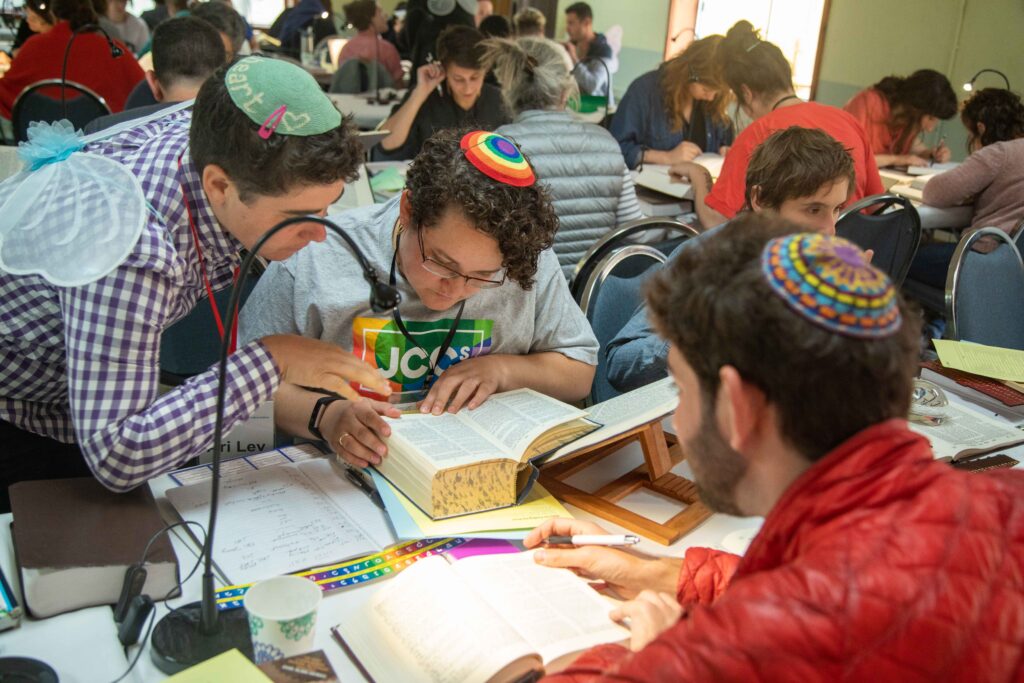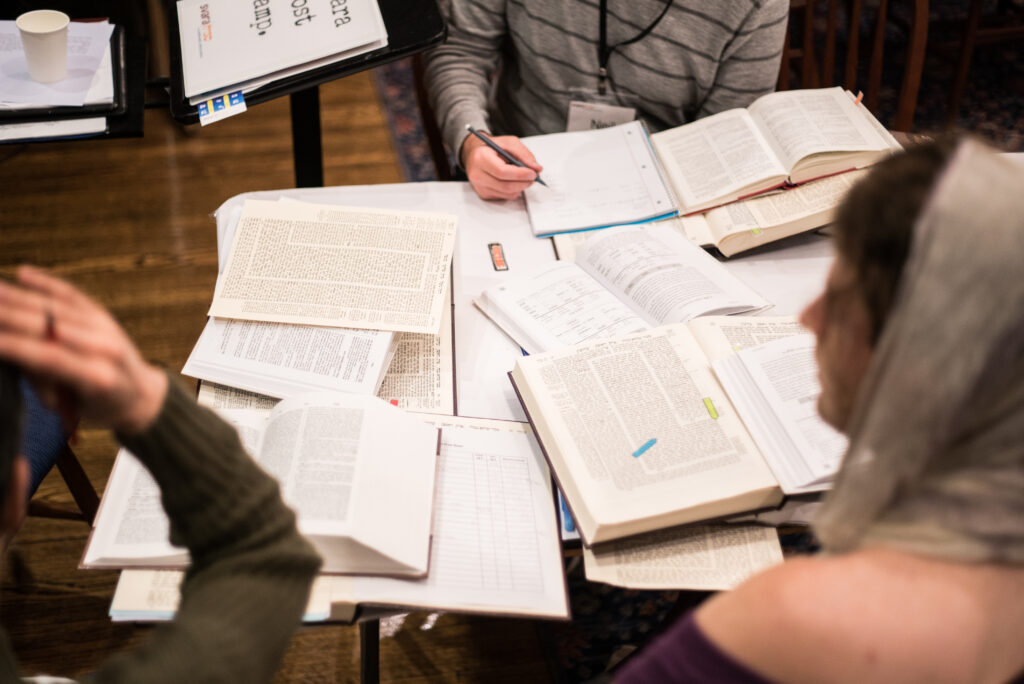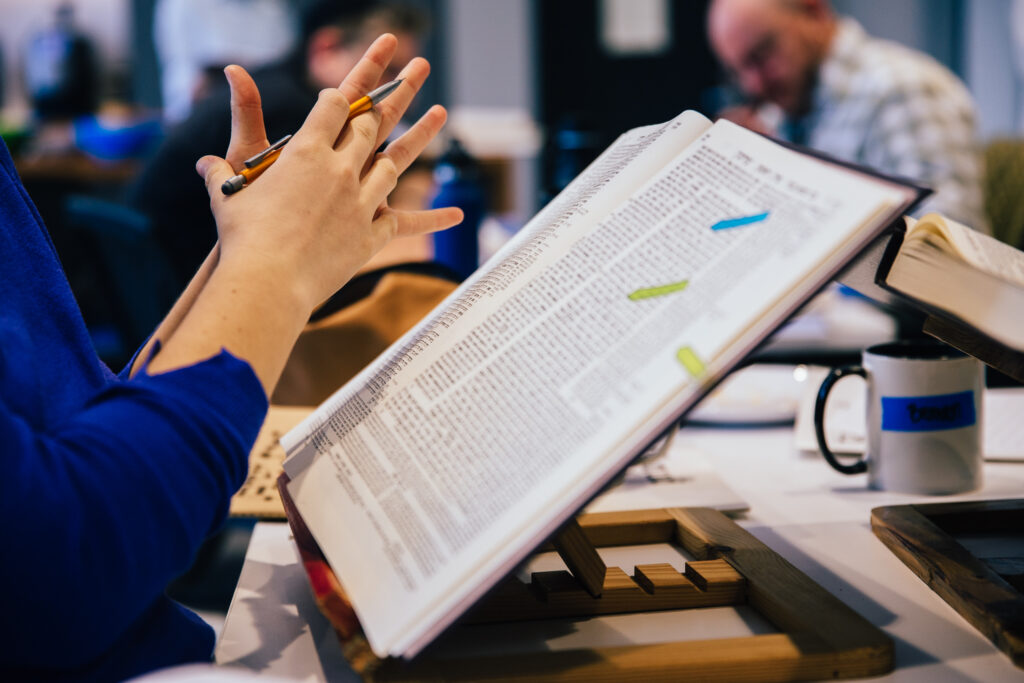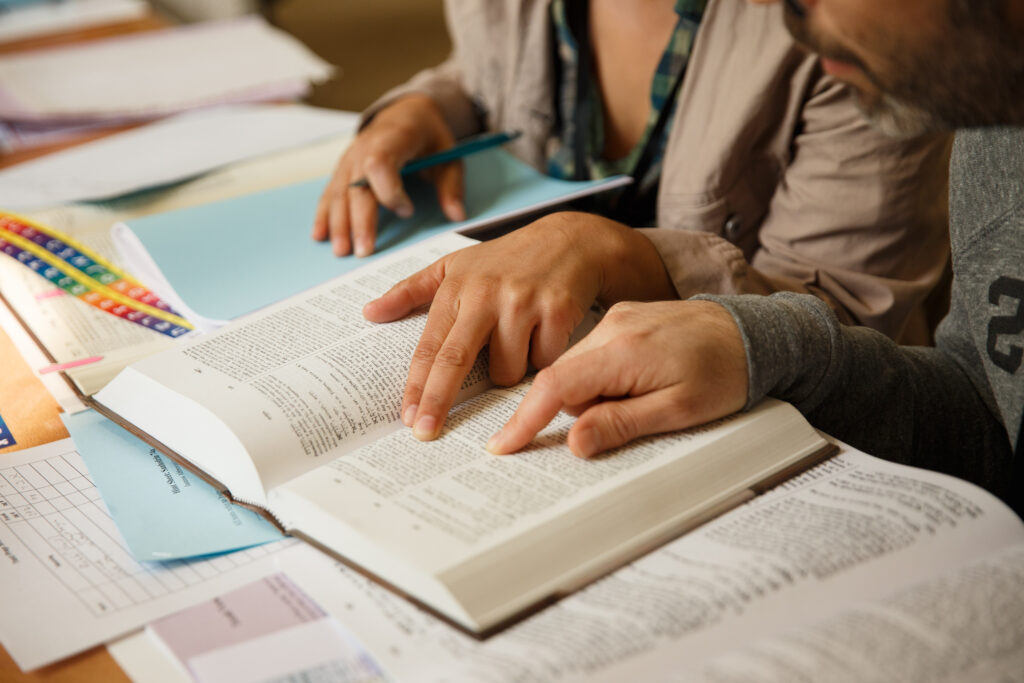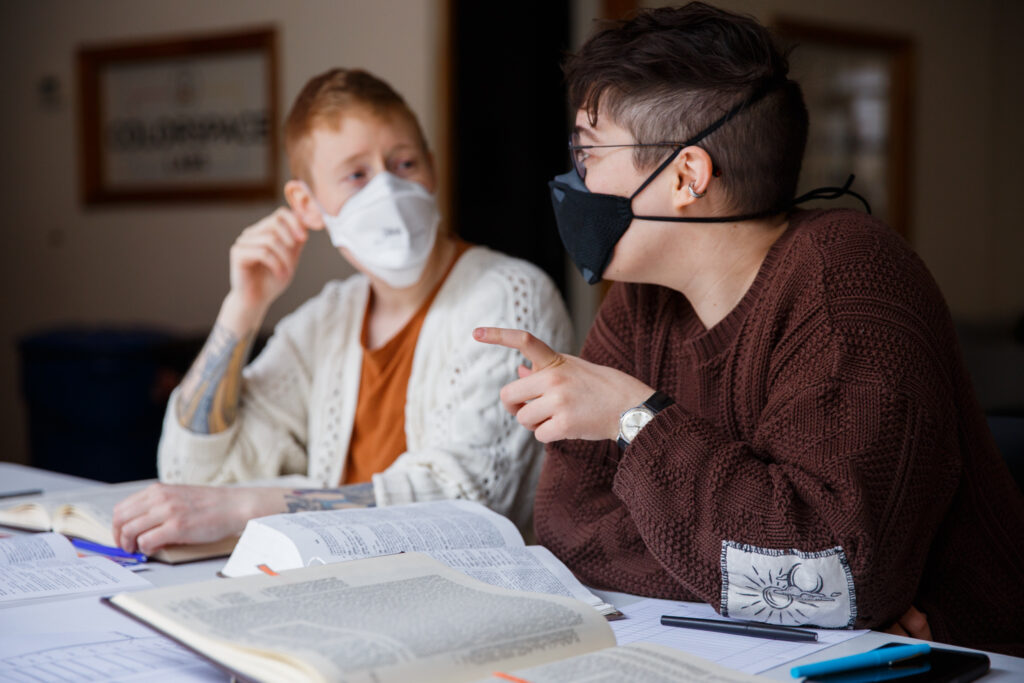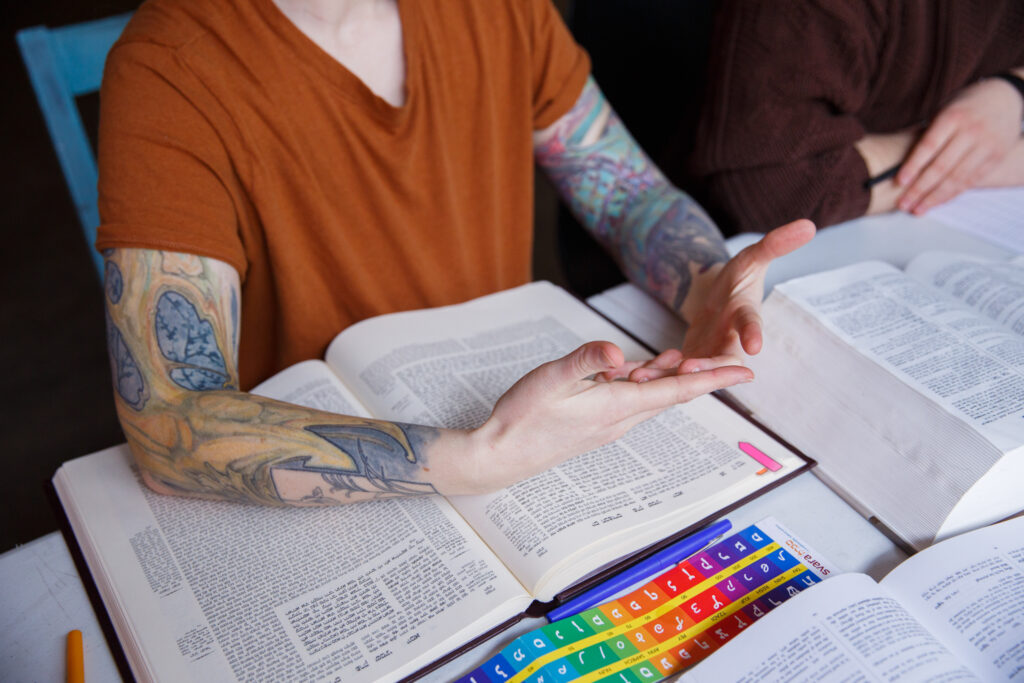As we wrapped up our semester of weekly learning for the Teaching Kollel, I declared (as I often do!), that the text we had learned is my favorite sugya. One Fellow noted, “Laynie, I’d love to find some time to hear more about what you love about this sugya.” The text hadn’t quite landed for them in their body, they noted, and they wanted to do some extra thinking and learning together to explore the “magic” that’s underneath this text. This is the true blessing of learning at SVARA, y’all.
In 2020 we’ve learned more text than ever before: we’ve explored the mishnah in Masechet Avot through daily study over the past 10 months (and learned almost 70 mishnayot in almost 250 sessions!), we’ve learned over a dozen sugyot (sections of Talmud), we’ve sat with folks in countless Fairy Hours, and we’ve had our hearts expanded infinite times.
More SVARA-niks are learning more Torah, and finding new ways to bring the wisdom of our ancestors to life. We’ve spent this past year deepening our learning personally, and deepening our learning together as a yeshiva. For many of us this year brought the first time we’ve delved into Mishnah, or the first time we worked our way through a page of Talmud. For some of us this year we learned a new grammatical structure, explored a new root-meaning (or found new meaning from a familiar root!). For others this year brought our first moments of owning a text, or new realizations about the role we want our tradition to play in our lives. We’ve experimented with new practices, taken on different forms of observance, and we’ve lived our tradition in new ways.
As I am clapping up this learning community for the deepening we’ve done, for the ways in which we’ve moved along our spiraling non-linear paths to becoming players—people who are transformed by and in turn transform—our tradition, I’m struck by the invitation from our Fellows to take the time to name and unpack the places of love that we’re experiencing in our learning and our teaching.
Our Rabbis know that the power of learning is in its delight, in the pleasure that we find in it:
א”ר אין אדם לומד תורה אלא ממקום שלבו חפץ
שנאמר (תהלים א, ב) כי אם בתורת ה’ חפצו
Rabbi Yehuda HaNasi says: A person can learn Torah only from a place that their heart desires,
as it is stated: But his delight is in the Torah of the Lord… (Psalms 1:2)
(Avoda Zara 19a)
A person can only learn ממקום / ”from a place” that their heart desires, Rabbi Yehuda HaNasi argues. This statement from Rabbi Yehuda HaNasi is interpreted by his students as reflective of the material itself, offering the following emendation: “A person can only learn from [the places in Torah] that their heart desires,” suggesting that we can only learn the texts, traditions, and teachings where we find our hearts aligned with what is in front of us. True learning comes from exploring the material we want to explore, finding the texts and teachings that speak most directly to our hearts. (His students use this as an excuse to leave shiur, because they’d rather learn Proverbs instead!) A later sage, Rava, joins the conversation, adding a different interpretation of the same verse:
אמר רבא לעולם ילמוד אדם תורה במקום שלבו חפץ
שנאמר כי אם בתורת ה’ חפצו
Rava says: A person should always learn Torah in a place that his heart desires,
as it is stated: “But his delight is in the Torah of the Lord” (Psalms 1:2). (Avoda Zara 19a)
At first glance, Rava’s read of the verse is the same as Rabbi Yehuda HaNasi’s: when you’re learning, make sure your heart is in it. But when we read closely, some subtle differences emerge in the two teachings that add texture to what it means to truly delight in our learning. Rabbi Yehuda HaNasi uses the language of ממקום / ”from a place,” while Rava uses the language of במקום / “in a place.” The prefix “-ב” / “in” or “with” in Rava’s teaching tells us that perhaps there is something about the learning space itself that enables one’s heart to be filled with pleasure and delight. For Rava, it’s not about the material itself, but rather the community and space that holds them.
Rabbi Yehuda HaNasi and Rava are offering complementary perspectives, each inviting us to consider one fundamental aspect of what we need in order to learn most fully. Both of their teachings remind us that it’s impossible to really learn when our heart is not in it, when our full desire is not there. Together they offer us a vision of desirous and delightful learning, learning in which we take pleasure in the topic at hand, the material in front of us, the teachers who guide us, and those learning alongside us.
As Queer folks it is not a given that we would find the places and the texts that delight our hearts. We know all too well the ways in which learning can feel impossible when we are forced to conceal, adjust, tamper aspects of who we are in order to show up somewhere to learn, and we know all-too-well the pain of learning Torah whose content speaks about us, treating us as objects rather than subjects of Torah and halakha. To learn as our full selves and to learn in and from a place of delight is a deeply radical act.
Rava’s statement in the gemara continues, adding that when we learn from this place of deep desire, and we bring that desire to our learning fully, our learning leads to true ownership. Owning our tradition, according to Rava, is not about a deep sense of mastery over something, but is a pleasure-filled act that demonstrates the kind of love we have for the tradition and for the community that helped us come to understand it. This is, I think, why each sugya we learn in the bet midrash is truly my favorite, and is the magic of our learning that I carry with me each day as I move in and out of our dreamy queer mitzvah-land with each of you: deep learning that is in, with, through, and from a place that my heart delights. What is some of the learning that you’ve loved this year? What is it that you’ve loved about it?


